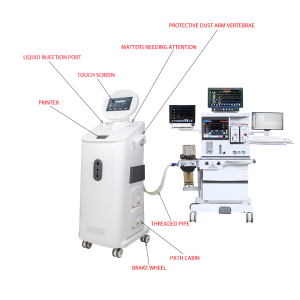Comparison of basic disinfection method and internal circulation disinfection method of anesthesia ventilator
Invasive ventilators are critical medical devices that require thorough disinfection to prevent the spread of infection. However, traditional disinfection methods for these devices can be time-consuming, labor-intensive, and may not completely eliminate all pathogens. An alternative method is the internal circulation disinfection machine for anesthesia breathing circuits, which offers several advantages over traditional methods.

The basic disinfection method for invasive ventilators involves disassembling the device and manually cleaning and disinfecting each component. This process is time-consuming, can cause wear and tear on the device, and may not completely eliminate all pathogens. Frequent disassembly can also increase the risk of damage or malfunction.
In contrast, the internal circulation disinfection machine for anesthesia breathing circuits eliminates the need for disassembly, reducing the risk of damage and improving efficiency. The machine is connected to the external pipeline of the anesthesia machine or ventilator, and disinfection can be initiated with the touch of a button.

The internal circulation disinfection machine adopts compound alcohol and ozone disinfection factors, which can eliminate various pathogens including drug-resistant bacteria. It achieves this through multiple compound factors that work together to enhance the disinfection process. The disinfection process takes only 20 minutes, making it a time-saving option for busy healthcare facilities.
The internal circulation disinfection machine also features patented design features that improve safety and efficiency. The dust-proof arm vertebrae prevent the connecting pipeline from being exposed after disinfection, reducing the risk of secondary infections. Additionally, the patented path warehouse design on the right side of the machine can be used to place small instrument parts for internal disinfection.

Using an internal circulation disinfection machine for anesthesia breathing circuits can help prevent secondary infections and improve patient safety. By eliminating the need for manual disinfection, this technology reduces the risk of human error and ensures consistent, thorough disinfection of the device. It can be especially beneficial in busy healthcare environments where time and resources are limited.
In conclusion, the internal circulation disinfection machine for anesthesia breathing circuits offers significant advantages over traditional disinfection methods for invasive ventilators. Its innovative design, complex disinfection factors, and patented features make it a powerful tool for preventing the spread of infection and ensuring patient safety. Healthcare providers should consider incorporating this technology into their infection control protocols to improve efficiency, reduce the risk of secondary infections, and enhance patient outcomes.